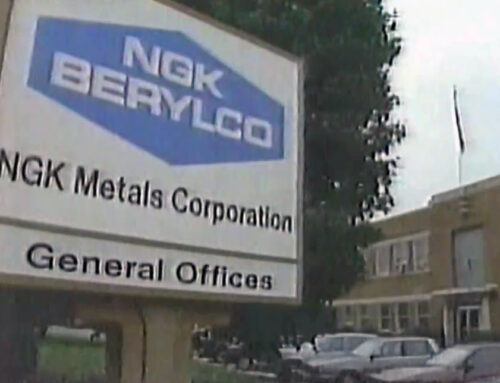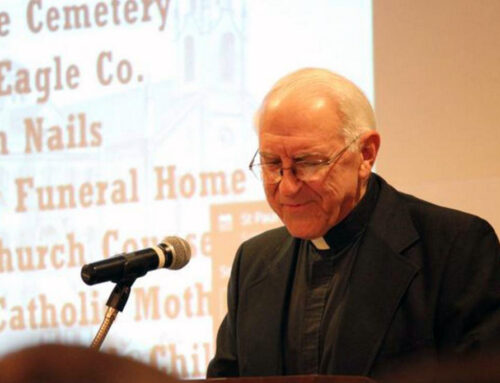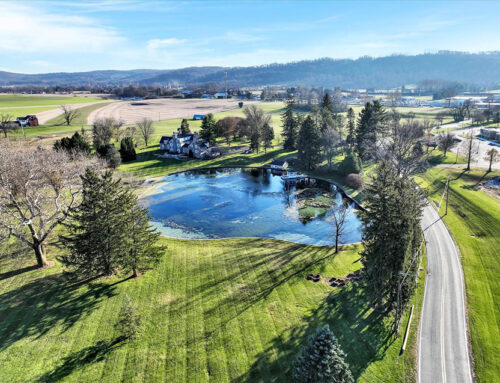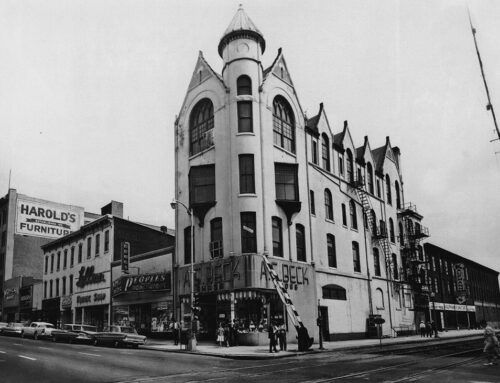Long before the construction of the Berks County prison in Bern Township a battle raged over what to do with the old jail located in City Park.
Below: Berks County Prison (1847-1936).

A museum, convention hall, and memorial were the most popular suggestions for the prison.
Rather than raze the building a group of Reading architects, known as the Association of Architects, gathered in May of 1931 and proposed changes that would turn the old jail into a convention hall with a large outdoor auditorium and a memorial hall. It was to be dedicated to the soldiers, sailors and marines of Berks County. The historical sandstone front was to be retained but the rest of the jail was to be removed and remodeled.

But the cost of converting the structure into something useful was held to be too high. Architects’ drawings were submitted, studied and then discarded. Estimated cost was between $200,000 and $300,000. The proposal never received adequate popular support.
Along came the Civil Works Administration and State Employment Relations Board and city officials decided that a portion of the plot inside the high jail wall could be cleared with unemployed labor. Down came the boiler house and bakery. But there still remained two cell blocks and the front.
After several prolonged conferences the cell block in the rear was razed and workers started on the cell block attached to the front. Now everything had been razed with the exception of the tall tower and the sandstone front.
Supporters for the preservation of the old prison, had practically abandoned the cause.
“Might as well tear it down,” said Miss Mary Archer, strongest champion for preservation of the old structure. “They destroyed the real value when they demolished the buildings in the rear.”
There it stood like a house with a front door and no rooms to enter. William I. Hoch, park engineer, suggested that the entire structure be razed and if necessary reconstruct the tower as an observation point at the north bend on the Skyline Boulevard.
Below: Berks County Prison (1847-1936).

In 1847, commissioners John Sherman, Michael Gery, and Fred Printz engaged John Haviland of Philadelphia, the foremost architect of his day, to design an appropriate structure in keeping with the principle of separate-and-solitary confinement.
Designed to resemble a Norman palace, probably more sandstone was used to build the prison than any other building in Reading. Geologically known as Potsdam white sandstone, the “stone taken from Mt. Penn” has been used in construction of many structures in Reading, including the Berks County Prison in City Park.
Below: Berks County Prison (1847-1936).

The June 26,1847, Berks & Schuylkill Journal reported: “The front (of the prison) is built of grey sandstone, each range fluted, and rough-dressed, and presents an appearance quite in keeping with the edifice.
“The completion of the new prison will introduce a new feature in the prison discipline of this county. Instead of the prisoners being thrown together promiscuously, as in the old jail, each inmate will have ‘private apartment’ for his exclusive accommodations. A wholesome discipline of correction and labor will be introduced, which will be calculated to reform the inmates and lead them to habits of industry instead of idling away their time calculating new plans of mischief when their term of service has expired.”
Constructed between 1847-1848 at the top of Penn Street, the prison was 170 feet in length from tower to tower and 300 feet deep. A central circular stone tower rose 96 feet and two 50-foot high octagonal bastians stood at the front corners. A stone wall 20 feet in height and two feet in thickness surrounded the exercise yard.
The distinguished social reformer, Miss Dorothea Dix, inspected the prison on June 23, 1849, and declared it to be an outstanding facility.
The new prison was completed at a cost of $17,000.
This prison was replaced in 1931 with a new Berks County Prison located in Bern Township.
City officials had practically forgotten the structure existed and the county washed its hands of the affair when it deeded the property to the city. The opening from the cell block to the tower had been boarded up and the space inside the jail walls had been converted into a play area.
The fate of the historic landmark had caused many to shake their heads. “Shakespeare was right.” an idler in City Park declared. “It’s a case of ‘Much Ado About Nothing.'”
Below: Berks County Prison (1847-1936).

By June 1934 parts of the prison had been torn away. There were still hopes, however, that something could be done with the outer walls, the great tower, and the twin bastions. Regrettably the situation proved hopeless and by 1936 nothing remained.
City officials salvaged all they could. Much of the sandstone was reused in many homes, retaining walls, and buildings, including the construction – by the WPA – of the field house at Baer Park, West Douglass and George streets.
The parcel, the exact prison boundaries of which remain intact, is now set apart for the exclusive use of police vehicles and personnel. The original front steps of the prison also survive here as convenient points of reference.
Below: Front steps of former Berks County Prison.







Leave A Comment